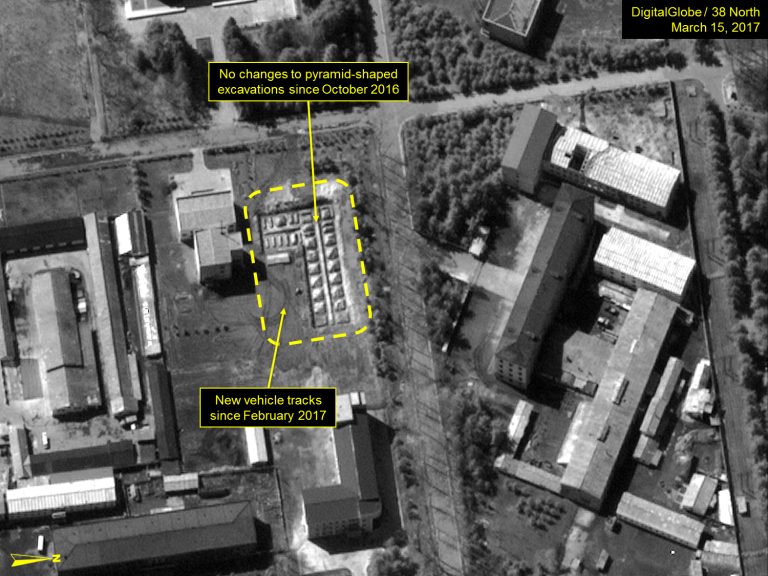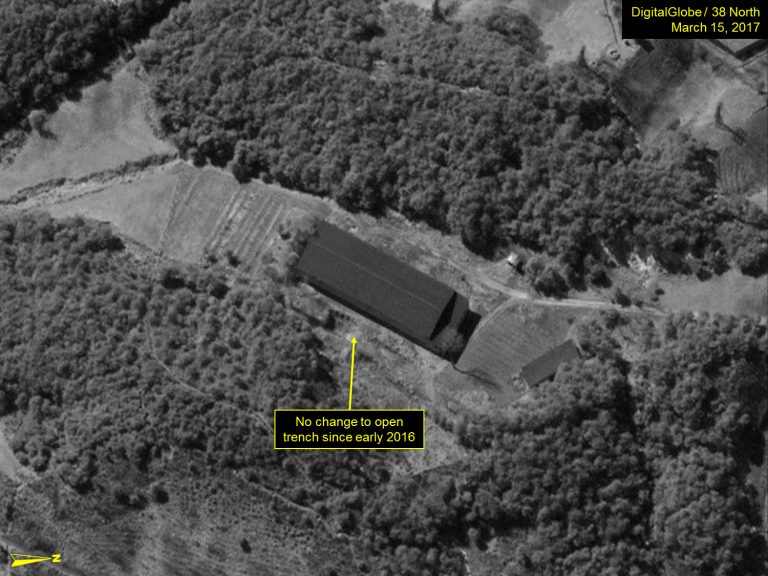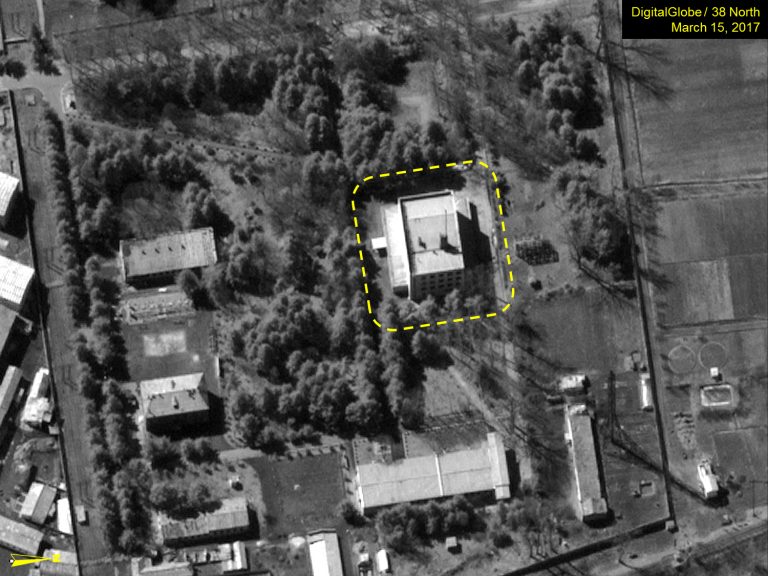Continued Activity at Key Plutonium Production Facilities at North Korea’s Yongbyon Nuclear Complex; Purpose Unclear
A 38 North exclusive with analysis by Joseph S. Bermudez, Jr.
Recent commercial satellite imagery of the Yongbyon Nuclear Scientific Research Center indicates activities are taking place at a number of key facilities directly related to the production of fissile material for nuclear weapons. These include:
- The arrival of specialized railroad flatcars at the railyard, adjacent to the new Isotope Production Facility that also services the Radiochemical Laboratory.[1] These specialized railcars, three of which are flatcars carrying four tanks or casks each and one gondola car carrying what appears to be a shipping container, have been associated with past reprocessing campaigns—likely transporting radioactive waste or chemicals—and were last seen here on October 27, 2016.
- Several trucks and a small vehicle are observed within the Radiochemical Laboratory. Two trucks are in front of the shipping/receiving building where spent fuel rods are received and waste byproducts are shipped from. No vehicles are observed in the facility’s motor pool, whereas there are typically two to four vehicles present.
- Two trucks are present in the shipping/receiving area on the east side of the 5 MWe reactor. The reactor itself may not be operating, or is operating at a low level, as there does not appear to be any waste water flowing from the output pipe to the east of the building nor is there any surface activity noted around the cooling cisterns in the river.
The purpose of these activities remains unclear, suggesting several possibilities. These include:
- The previous reprocessing campaign at the Radiochemical Laboratory that was thought to have been completed in mid-2016 may have only processed a portion of the spent fuel rods from the 5 MWe reactor, and an additional campaign may begin soon to produce more fissile material.
- The cleanup at the Radiochemical Laboratory following the 2016 reprocessing campaign was never completed and it will soon resume.
- There may be a previously unreported relationship between these specialized railcars and the enrichment activity at the Centrifuge Building.
- There may also be an unreported relationship between these specialized railcars and possible tritium separation.
Figure 1. Specialized railcars seen near the Isotope Production Facility.
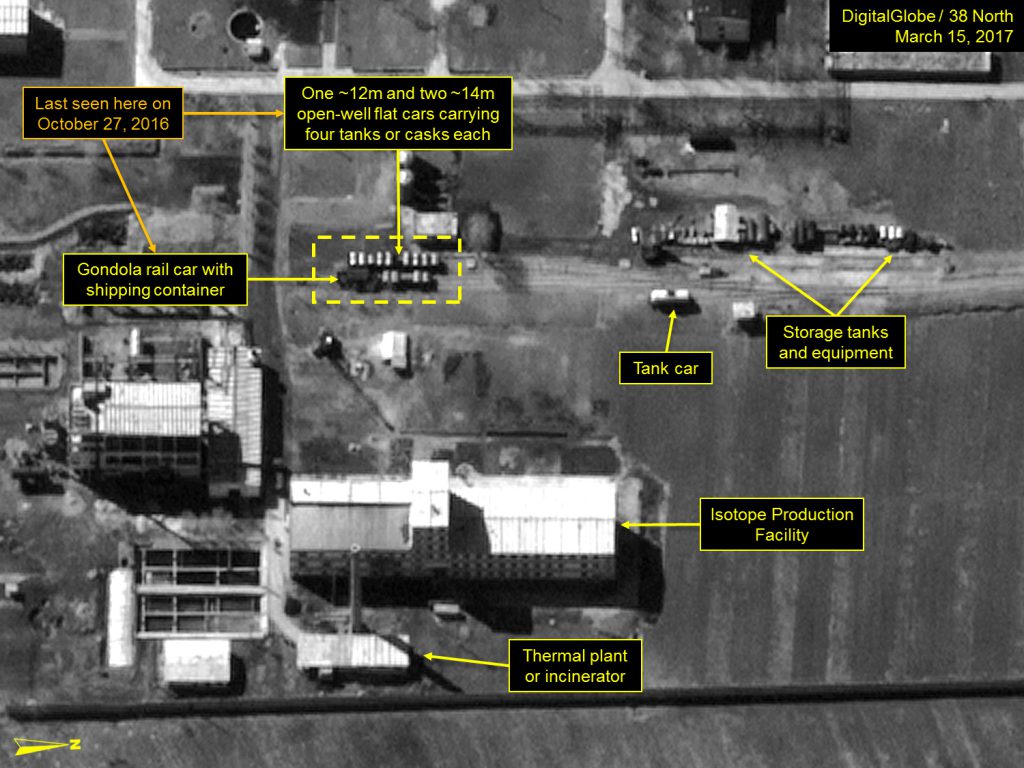
Figure 2. Vehicles seen near the Radiochemical Laboratory.
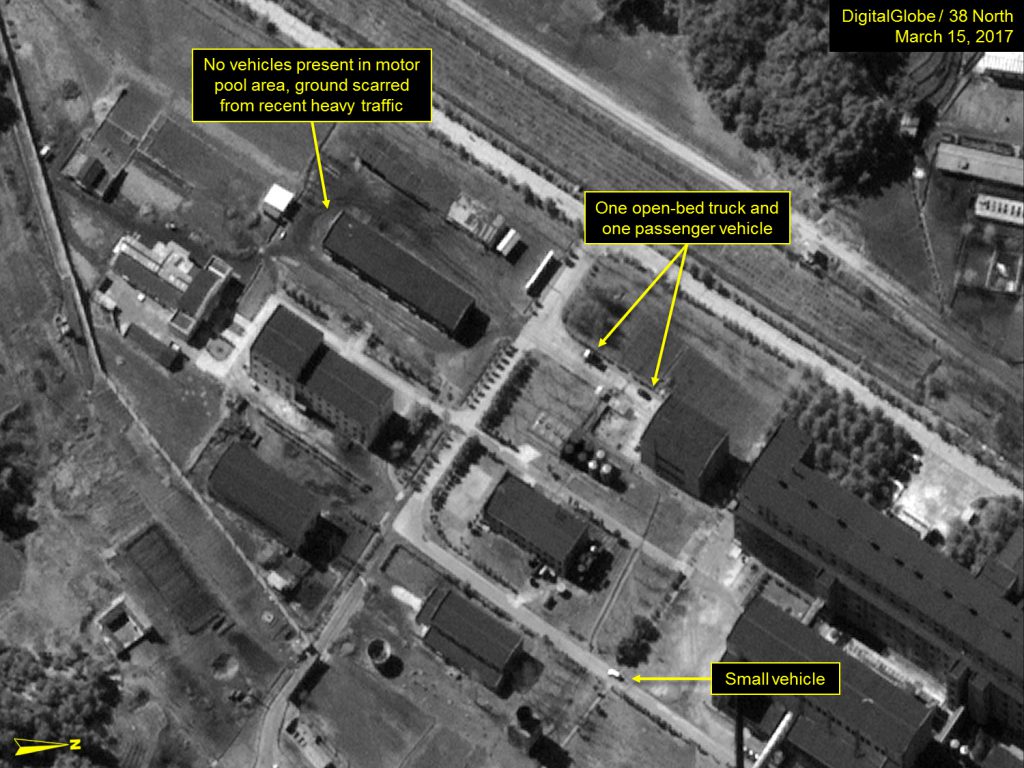
Figure 3. Two trucks seen near the 5 MWe Reactor.
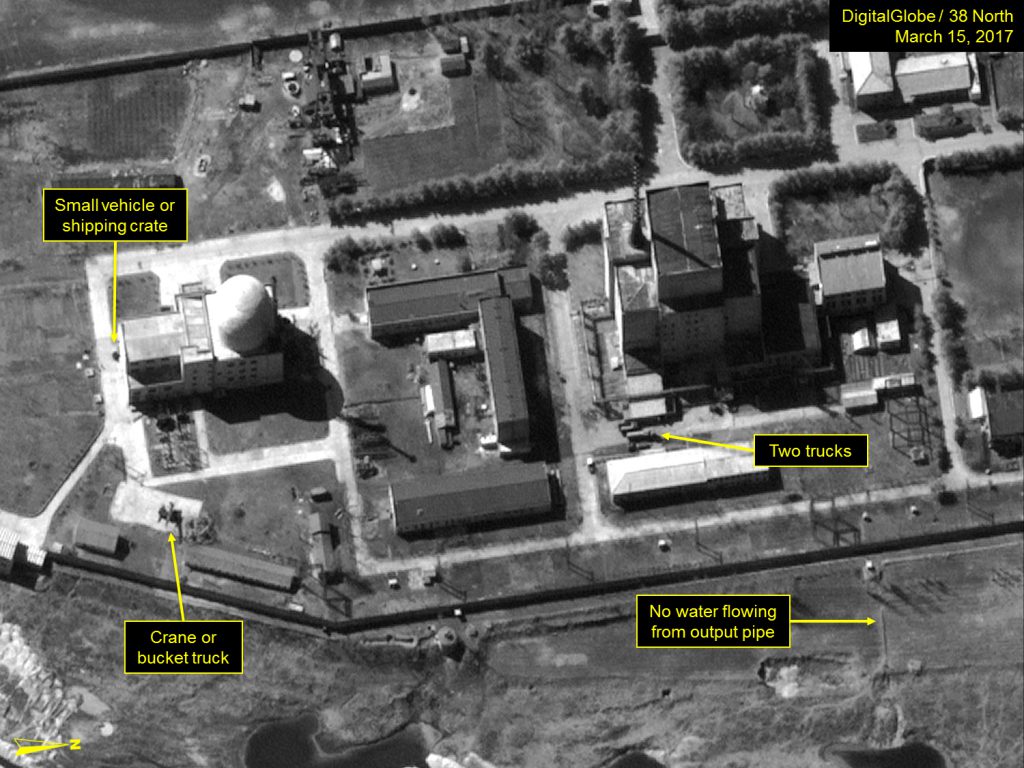
Elsewhere in the Facility
As has been typical during the past year, no activity is observed at the IRT Research Reactor or Building 500 (used for waste storage). The trench on the east side of Building 500 has remained unchanged since April 2016. The pyramid-shaped excavations south of the IRT Reactor have remain unchanged since October 2016, however vehicle tracks south of the site indicate recent activity there. The intended purpose of these excavations is still unknown.
Figure 4. No changes seen at the IRT Research Reactor, Building 500 or the pyramid-shaped excavations near the IRT Reactor.
The thermal plant for the Radiochemical Laboratory continues to stand dormant as the coal levels in the stock pens have remain unchanged since November 2016. Additionally, the track leading to the plant’s coal storage shed is in the process of having its rail ties replaced, suggesting planning for future use.
Figure 5. Rail ties are being replaced on track leading to the coal storage shed near the Thermal Plant.
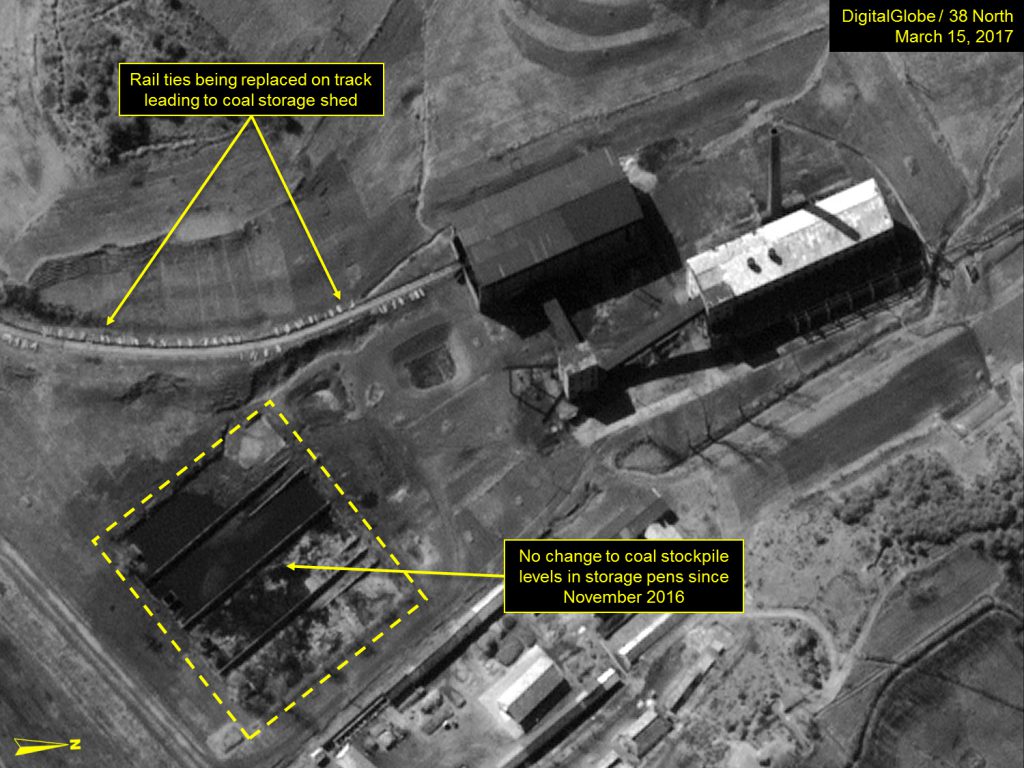
Further to the south, two small trucks are observed on the west side of the Centrifuge Building. Since no external activity is noted they are likely engaged with activity inside that building.
Figure 6. Two small trucks seen near the Centrifuge Building at the Uranium Enrichment Facility.
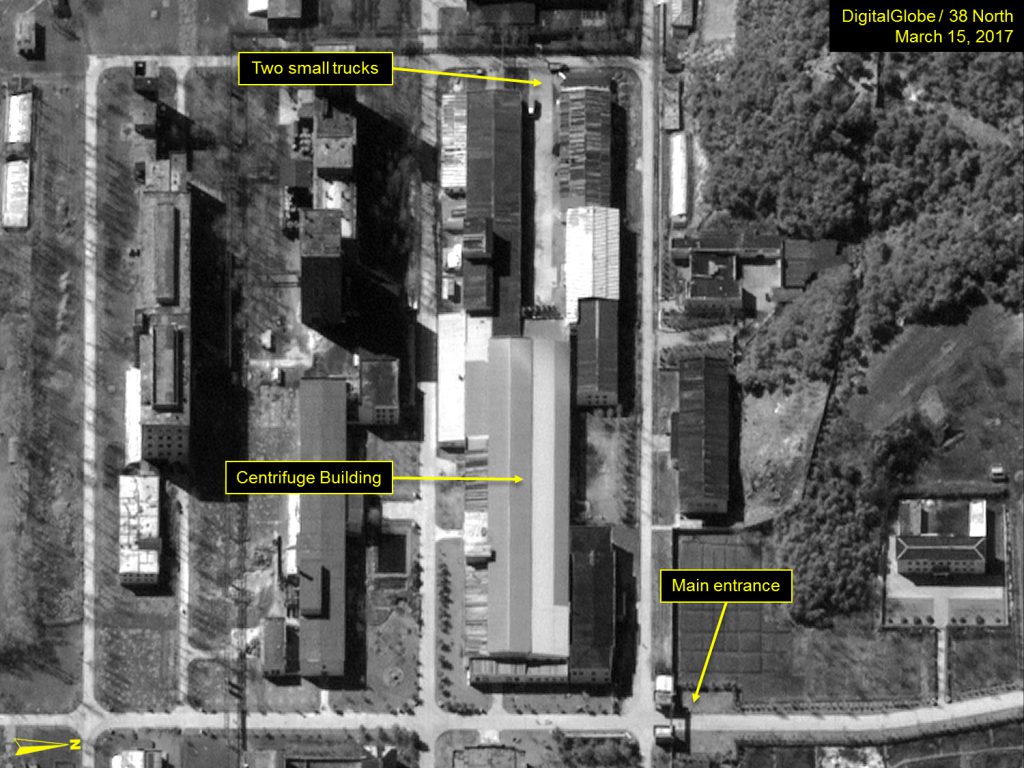
—————-
[1] As noted in previous reports, the measurement of 14-meter-long rail flatcars is approximate and while these are likely open-center railcars they could also be depressed center railcars. Both open-center and depressed-center flatcars are not common on North Korea’s rail network. These railcars could potentially be useful in supporting future operations at the Isotope Production Facility.

